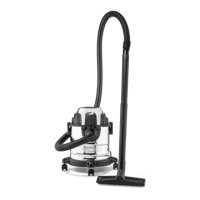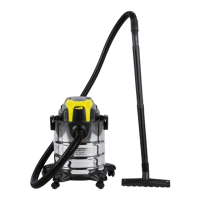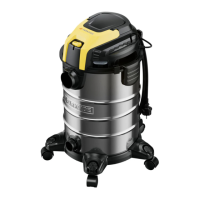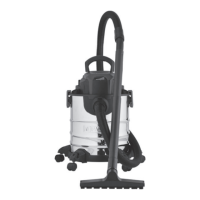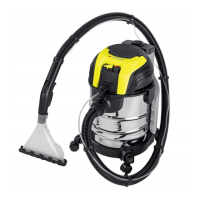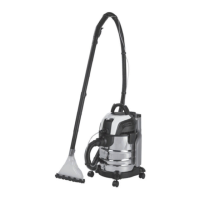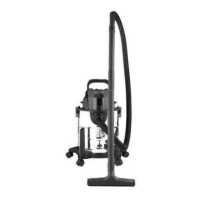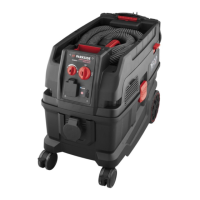GB IE
NI CY
10
If foam or liquid exits, switch off the
machine immediately.
Dry vacuuming
The appliance is supplied with the
textile lter bag ( 16) tted.
For dry vacuuming, pull the material lter
(16) over the lter basket (21).
A uted lter, which can be used
instead of the fabric lter included
in delivery, is optionally available
(see “Replacement parts/Accesso-
ries“).
Vacuuming with the paper lter
bag:
To avoid the uted lter becoming
clogged, we recommend the addi-
tional use of a paper lter bag.
Insert the material lter
1. Pull the material lter (16) over the l-
ter basket (21).
Insert the paper lter bag
2. Pull the paper lter bag (17) over the
internal suction tting (22). The sealing
ring (23) on the lter bag opening must
fully surround the connector (24) on the
suction tting.
A ne dust lter bag made of micro
lter eece is also optionally avail-
able, which can be used in place
of the included paper lter bag (see
“Replacement parts/Accessories”).
Vacuuming ne dust:
Specic suction processes (e.g. grinding
of paints and lacquers, milling or drilling
walls, grinding or drilling hard wood) can
pose a risk from hazardous dust.
We recommend using the following option-
al lter combination, which is available,
for ne dust (see “Replacement parts/Ac-
cessories”):
1. Folded lter which is used in stead of
the textile lter bag(16) included in the
scope of delivery.
2. Fine dust lter bag made of eece,
which is used in stead of the paper
lter bag (17) included in the scope of
delivery.
Blowing
Operation without the use of a lter
is recommended.
To blow, plug the suction hose (13) onto
the connection (9) on the motor head.
Cleaning/Maintenance
Pull out the mains plug.
This will prevent danger of injury
from electric shock.
Always check the appliance before
use for any obvious faults such as
a defective mains cable, and have
these repaired or replaced.

